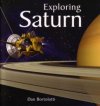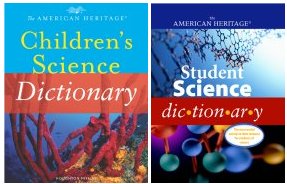Sounds of Titan Additional Information
Share this:
- Share via email (Opens in new window) Email
- Click to share on Facebook (Opens in new window) Facebook
- Click to share on X (Opens in new window) X
- Click to share on Pinterest (Opens in new window) Pinterest
- Click to share on Reddit (Opens in new window) Reddit
- Share to Google Classroom (Opens in new window) Google Classroom
- Click to print (Opens in new window) Print
You can learn more about the Cassini-Huygens mission at saturn.jpl.nasa.gov/home/index.cfm (NASA Jet Propulsion Lab) and www.esa.int/SPECIALS/Cassini-Huygens/(European Space Agency).
Take a virtual journey exploring the science behind the Huygens probe at www.open2.net/learning.html(Open University).
Listen to the sounds of Titan at planetary.org/sounds/huygens_sounds.html(Planetary Society).
You can learn about the recorded music brought to Titan by the Huygens probe at www.esa.int/SPECIALS/Cassini-Huygens/SEMJBDXEM4E_0.html and www.esa.int/SPECIALS/Cassini-Huygens/SEMYXC2VQUD_0.html (European Space Agency). You can hear it at music2titan.com/ (Silkwood Music).
Cowen, Ron. 2004. A Titan of a mission. Science News 166(Nov. 20):328-329. Available at http://www.sciencenews.org/articles/20041120/bob8.asp.
Sohn, Emily. 2005. Unveiling Titan. Science News for Kids (Jan. 26). Available at http://www.sciencenewsforkids.org/2005/01/unveiling-titan-2/.
______. 2004. Ringing Saturn. Science News for Kids (July 28). Available at http://www.sciencenewsforkids.org/2004/07/ringing-saturn-2/.
Books recommended by SearchIt!Science:
 |
Exploring Saturn — Dan Bortolotti
Published by Firefly Books, 2003.
“Saturn may be a cold, faraway ball of gas, but its beauty has made it a unique part of our world.” This book’s color photos, diagrams, and illustrations convey the beauty of the sixth planet from the sun, while the detailed text explores many fascinating facets of the ringed planet. Learn about Saturn’s composition, rings, and moons; and find out how planetary distances are measured. While the book gives a comprehensive history of how scientists through the ages have explored Saturn’s mysteries, it also devotes much attention to the Cassini-Huygens mission to explore Saturn, which will observe and explore Saturn from 2004 to 2008. |
Power Words
Huygens, Christiaan Born 1629; died 1695. Dutch scientist who invented a way to make better lenses for telescopes. Using these improved lenses, he discovered Saturn’s fourth satellite (1655) and its rings (1659).
hydrocarbon A chemical compound that contains only carbon and hydrogen. There are many different types of hydrocarbons. Each type is different from the others in the amount of carbon and hydrogen it has, and in the arrangement of its molecules. Hydrocarbons are used for fuels, to make plastics, and to make many other products, including crayons. Methane and benzene are hydrocarbons.
methane A gas that burns easily and is the most important chemical compound in natural gas. Methane is produced by the decay of plants and animals. It is the simplest of the chemical compounds known as hydrocarbons.
We get methane by drilling under the ground, but methane doesn’t just occur on Earth. It is one of the main gases in the atmosphere of that great gas planet Jupiter. And methane is common on Neptune, where the temperature is so cold (–373° Fahrenheit or –225° Celsius) that it freezes solid.
Copyright © 2002, 2003 Houghton-Mifflin Company. All rights reserved. Used with permission.
